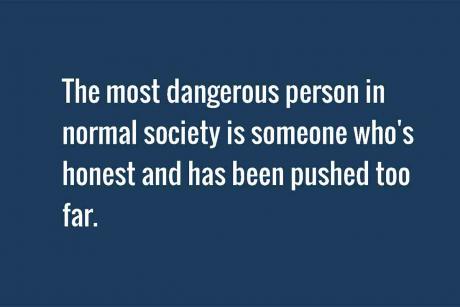The Killbox protocol is a method of controlling the spread of infectious diseases. It was developed by the World Health Organization (WHO) in response to the Ebola outbreak in West Africa in 2014. The protocol involves isolating and treating infected individuals, as well as tracing and monitoring contacts of those infected.
The Killbox protocol is based on the concept of “ring vaccination”, which involves vaccinating people who have been in contact with an infected individual, as well as those who may have been exposed to them. This helps to contain the spread of disease by preventing further transmission from person to person.
The Killbox protocol also includes measures such as providing personal protective equipment (PPE) for healthcare workers, ensuring proper disposal of medical waste, and providing education about how to prevent infection. In addition, it calls for rapid testing and diagnosis of suspected cases, and prompt treatment with antiviral drugs or other medications if necessary.
The WHO has implemented the Killbox protocol in several countries affected by Ebola outbreaks, including Guinea, Liberia, Sierra Leone, Nigeria and Mali. The results have been encouraging: since its introduction in 2014, there has been a significant decrease in the number of new cases reported each week.
Although the Killbox protocol has proven effective at containing outbreaks of Ebola virus disease (EVD), it is not without its drawbacks. For example, it requires a large amount of resources and personnel to implement effectively; this can be difficult for some countries with limited resources or infrastructure. Additionally, it relies heavily on public cooperation; if people do not comply with isolation or contact tracing measures then the effectiveness of the protocol will be reduced.
Despite these challenges, however, the Killbox protocol remains an important tool for controlling infectious diseases like EVD. By isolating infected individuals quickly and efficiently tracking their contacts, it can help reduce transmission rates and ultimately save lives.
Information warfare is a form of conflict that uses information technology to attack an enemy’s computer systems, networks, and data. It can be used to disrupt or disable communication networks, steal sensitive information, or manipulate data in order to gain an advantage over the enemy. Information warfare can also involve psychological operations such as propaganda and disinformation campaigns designed to influence public opinion or sow confusion among the enemy. Cyberwarfare is a subset of information warfare that involves using malicious code or other techniques to damage or disrupt computer systems and networks.
It involves the use of computer networks to disrupt, deny, degrade or destroy an adversary’s information systems and networks. It also includes psychological operations such as propaganda and disinformation campaigns designed to influence public opinion. Information warfare is a form of asymmetric warfare, where one side has a much greater advantage than the other in terms of resources and technology. This makes it difficult for the weaker side to defend itself against attack.
The free flow of information is essential for businesses to be able to operate efficiently and effectively. Businesses need access to accurate and timely information in order to make decisions, manage resources, and plan for the future. Without this information, businesses would struggle to compete in a global market.
International relations also rely heavily on the free flow of information. Diplomats need access to reliable sources of information in order to negotiate treaties, resolve disputes, and build relationships between countries. Without this information, it would be difficult for countries to understand each other’s positions and come up with mutually beneficial solutions.
Finally, social cohesion relies on the free flow of information as well. People need access to accurate news and data in order to stay informed about current events and make informed decisions about their lives. Without this information, people may not have the knowledge they need to participate fully in society or make decisions that are in their best interests.
In conclusion, the free flow of information is essential for business, international relations and social cohesion. It allows us to stay connected with each other and make informed decisions about our lives. Without it, we would be unable to function as a society or compete in a global market.
Electronic warfare is a powerful tool that can be used to disrupt or neutralise the electromagnetic transmissions of an enemy. It can be used for military purposes, such as jamming communications and weapons guidance systems, or for civil uses, such as disrupting air traffic control systems or railway signalling systems. Cyber-attacks are another form of electronic warfare that can be used to bring down digital networks and cause financial losses or disruption to businesses. Industrial control systems can also be targeted, which could put lives at risk if they are successfully disrupted. Psy-ops are a more subtle form of electronic warfare that aim to degrade the morale and well-being of a nation’s citizens by spreading false information and fear through social media and news outlets.
Information warfare, then, is the integration of electronic warfare, cyberwarfare and psychological operations, for both attack and defence.
The best way to prevent the spread of COVID-19 is to practice social distancing, wear a face covering when in public, wash your hands often with soap and water for at least 20 seconds, avoid touching your face, cover coughs and sneezes, clean and disinfect frequently touched surfaces, and stay home if you are feeling sick.
Information war has already broken out
Russia has also been accused of using cyber-attacks to influence elections in other countries, such as the United States and France. In the US, Russian hackers are believed to have targeted state election systems in an attempt to interfere with the 2016 presidential election. In France, there were reports of a massive cyber-attack on the French presidential campaign of Emmanuel Macron just days before the election.
Russia has denied any involvement in these attacks, but it is clear that they have become increasingly sophisticated and effective. As technology advances, so too does Russia’s ability to launch non-lethal attacks on its neighbours and beyond. It is likely that Russia will continue to use these tactics in order to further its own interests and gain geopolitical advantage.
A response to unconventional warfare
In order to effectively respond to the threat of information warfare, governments must develop a comprehensive strategy that takes into account all aspects of the problem. This should include a unified command structure with clear lines of authority and responsibility, as well as an integrated approach to cyber security that includes both military and civilian infrastructure. Governments should also invest in research and development to ensure they have the latest technology and techniques available for defending against cyber attacks. Finally, governments should work together to share best practices and coordinate responses to threats. By taking these steps, governments can ensure they are better prepared for any future information warfare scenarios.
The World Economic Forum recognizes the importance of understanding and defending against the full scope of information warfare. To this end, we are committed to working with governments, industry, and civil society to identify vulnerabilities and develop strategies for defense. We will also work to ensure that those responsible for implementing defense mechanisms have a single point of responsibility. Finally, we will strive to ensure that our policies are in line with ethical and legal codes so as not to be exploited by adversaries.
David Stupples is a Professor of Electrical and Electronic Engineering and Director of Electronic Warfare Research at City University London. He has over 40 years of experience in the field of electronic warfare, specializing in radar systems, signal processing, and communications. He has published numerous books and papers on the subject, including Electronic Warfare: Principles and Practice (Wiley-IEEE Press, 2011). He is also a Fellow of the Royal Academy of Engineering and a Fellow of the Institute of Electrical and Electronics Engineers.
You may also like


